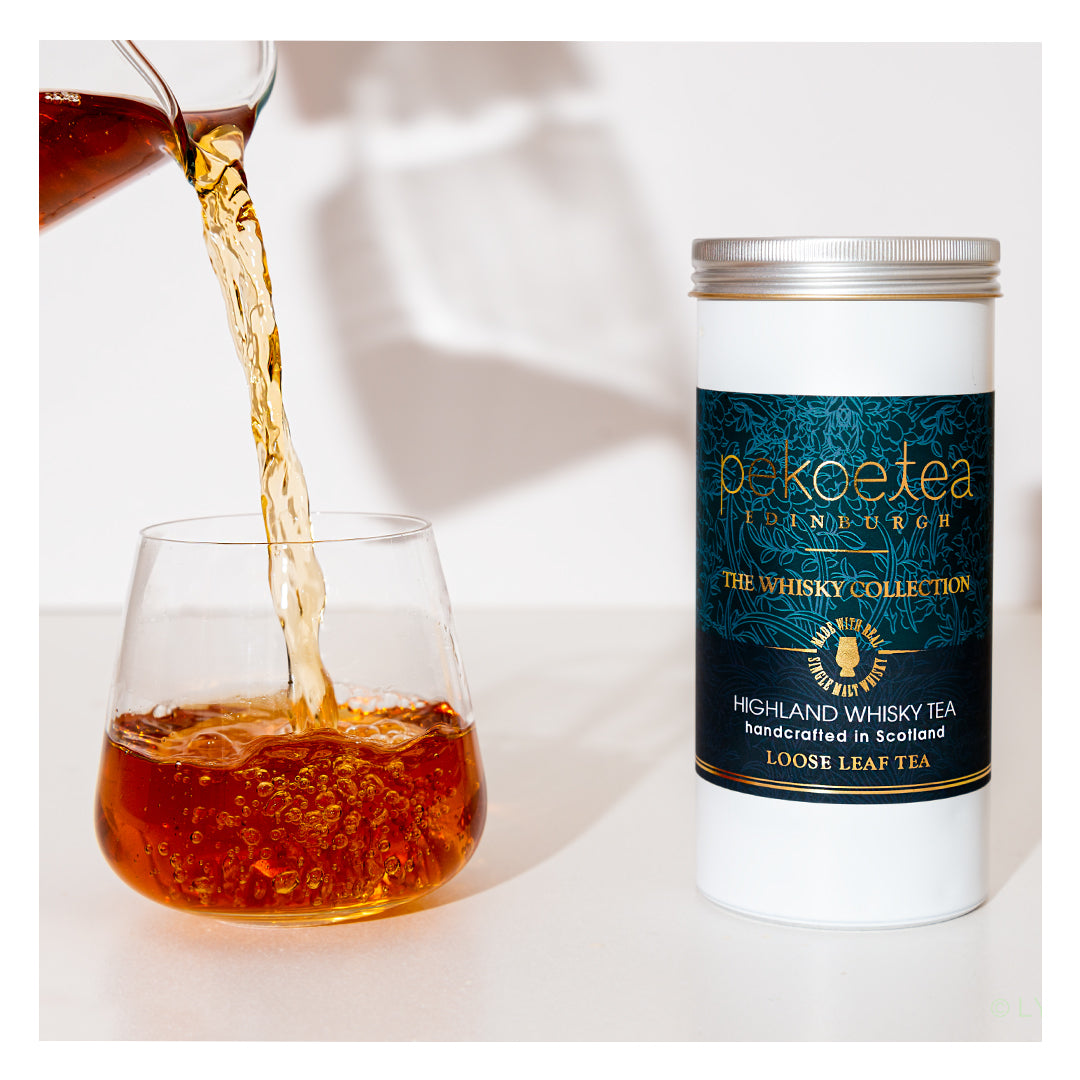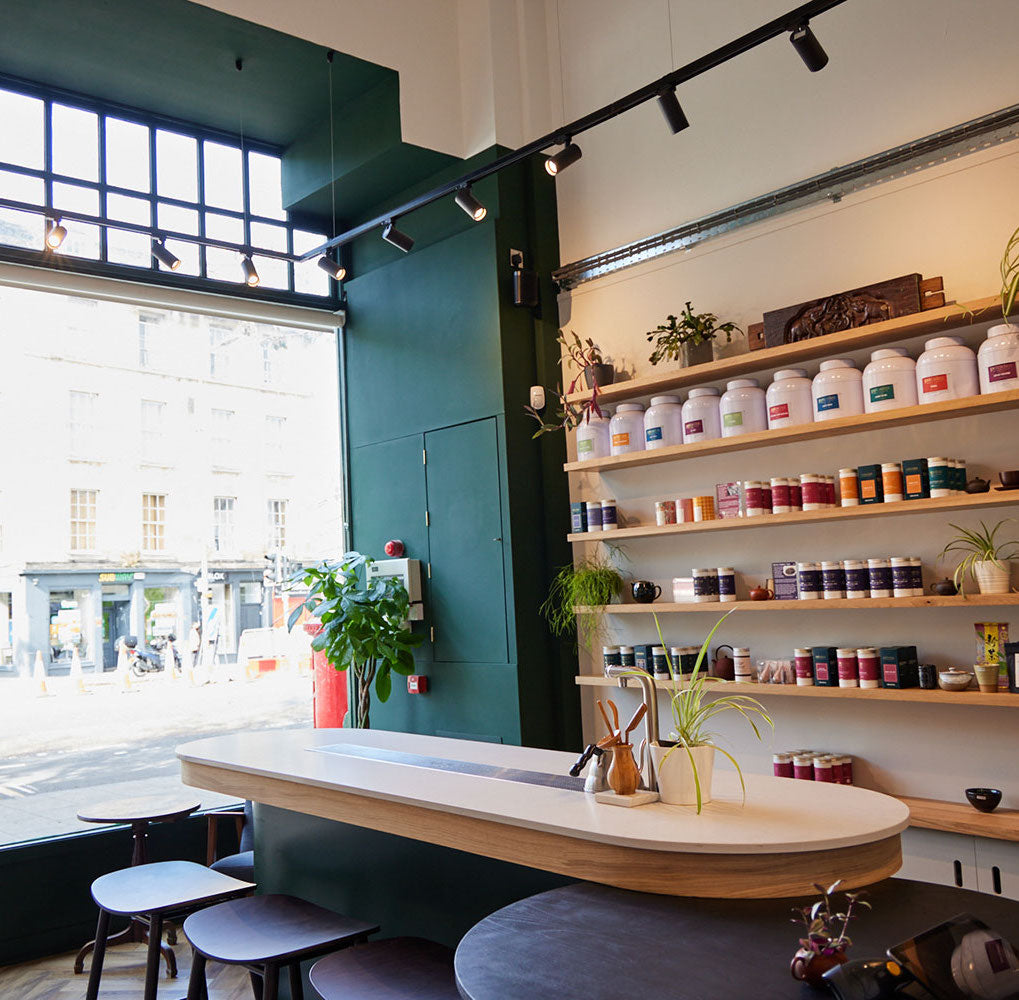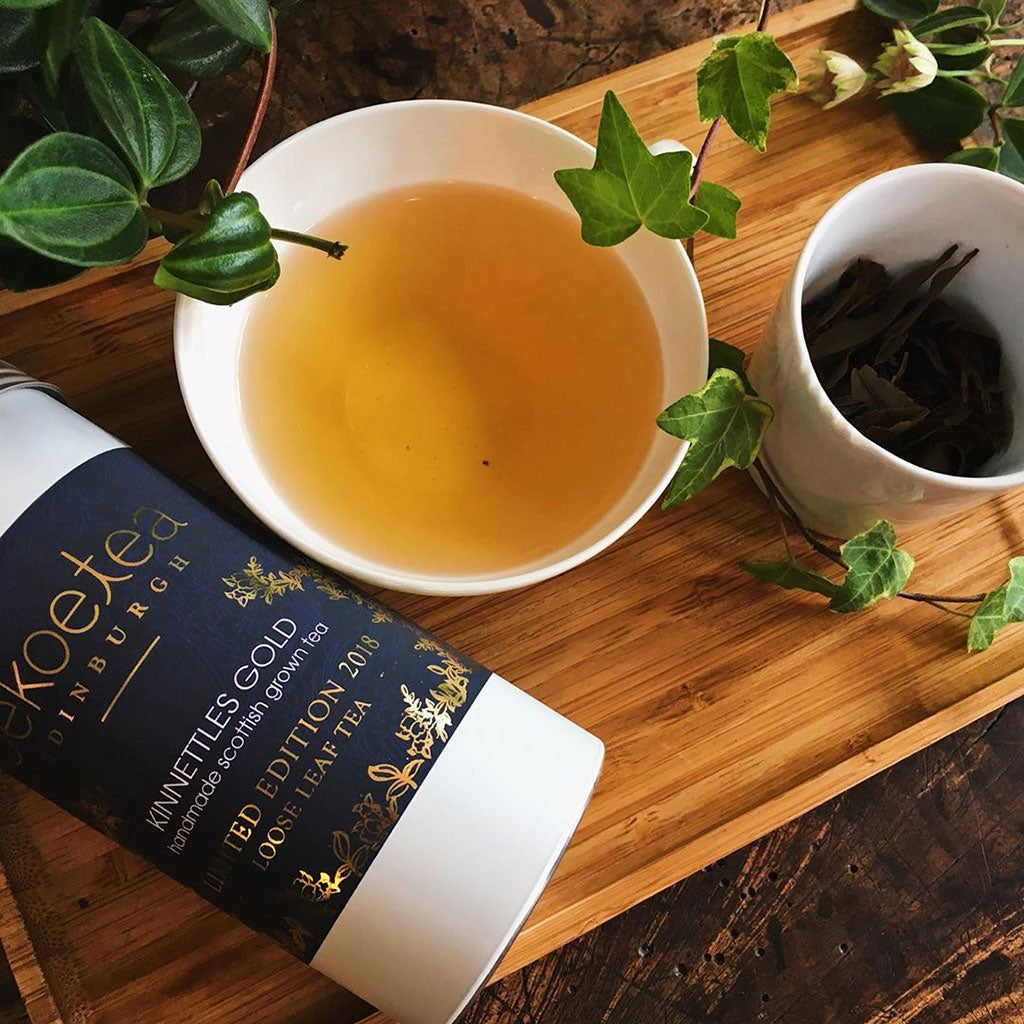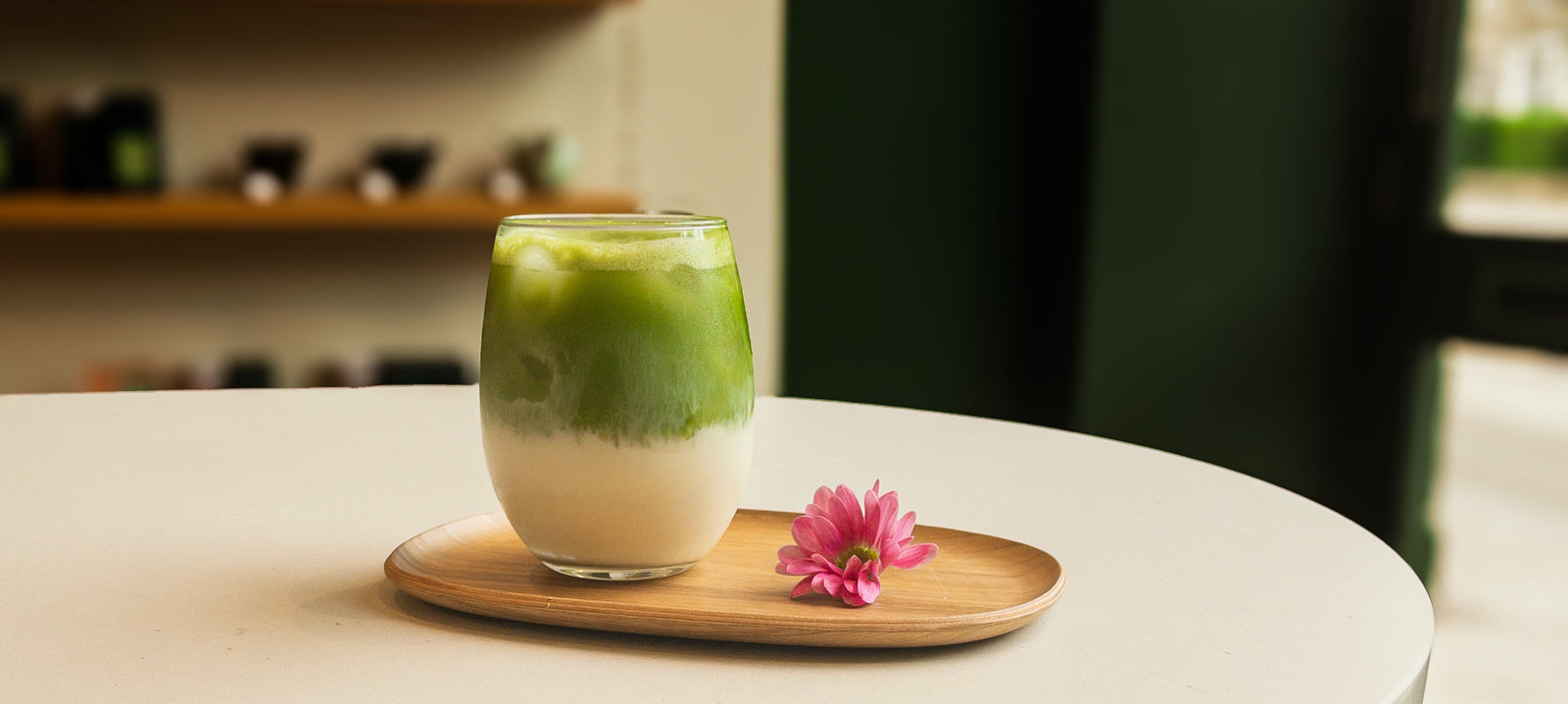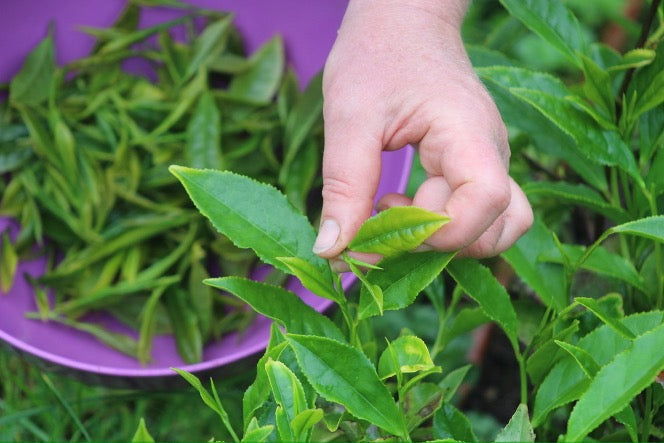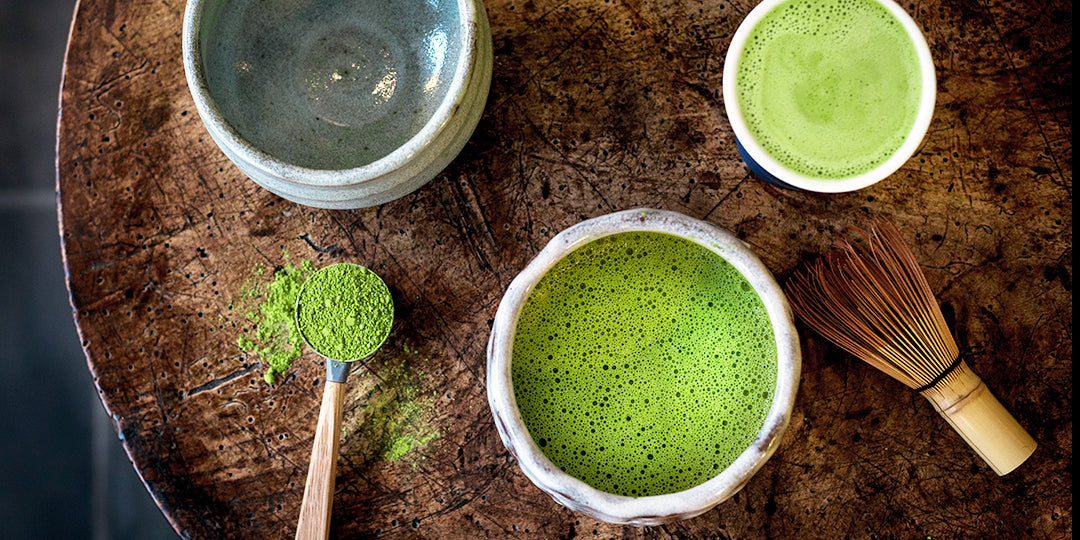Once largely unknown outside of China, Pu-Erh Tea is now one of its most sought-after luxuries and has a growing following of connoisseurs and enthusiasts who enjoy the rich variety and unique flavours to be found in these teas. Pu-erh tea is grown throughout Yunnan Province, getting its name from Pu'er City, originally the trading post from which Yunnan's teas were exported into the rest of China.

Pu-erh tea comes in a great variety, with each smallholding potentially giving something unique to the tea grown there. The most sought after region is Xishaungbanna Prefecture, home to the Six Famous Mountains where pu-erh cultivation is said to have reached its finest expression. Simao Prefecture, where Pu'er City itself is located, is also important as it is home to many of the finest factories that blend, ripen and press pu-erh tea. Also in Simao Prefecture, within Lancang County, are nine lesser-known peaks which grow tea that is now reaching a quality comparable to the Six Famous Mountains.

As with wine or whisky, the region imparts a broad character on the tea and its flavour profile. As with aged wines and spirits, though, much of the quality of the finished pu-erh tea depends on what happens to the leaves after they have been grown and picked. The broadest categories are ripened or shou pu-erh, and raw or sheng pu-erh. Then within those categories the tea may be pressed into cakes or sold loose, and might be blended or kept as a single estate tea.
All pu-erh starts out by going through the same process immediately after picking . The leaves need to be dried out, ideally under sunlight, to prevent any spoiling. Unlike green, black and oolong teas, the leaves will be handled very carefully to avoid any bruising which would promote oxidation. Once the leaves have dried, they are then dry-roasted to prevent most of the process of oxidation from progressing. This method is similar to the production of white teas, which are also carefully handled to avoid oxidation. The difference comes in the next stage.
Jingmai Mountain in Lancang County, part of Simao Prefecture in Yunnan Province, is where Pekoetea's Ancient Trees Pu-erh is sourced from. This is one of the nine mountains of Lancang County, where wild growth tea trees that date back centuries are still cultivated.
Jingmai Mountain and its district are mainly inhabited by Dai people, one of the recognised ethnic minorities within China. Dai people are indigenous to Yunnan Province, with cultural, linguistic and historical links to ethnic groups within Vietnam, Laos and Myanmar.
Jingmai tea is available in loose leaf form as either sheng or shou pu-erh, either raw or artificially ripened. The sheng version is sharp and fresh, with jasmine and fennel notes, while the shou version carries an earthy taste with ripe fruit notes and a long lasting, sweet aftertaste.
Unlike other teas, pu-erh is not dried further with hot air or sunlight after this roasting process. The result is that while in most teas all enzyme activity has been stopped and no active fermentation is possible, in pu-erh some enzymes remain and the cultures of bacteria and yeast found naturally on tea leaves survive. This means that a minimal oxidation continues to happen as the tea ages, and active fermentation starts. At this stage, the tea is known as maocha, or 'rough tea', and has a strong, sharp and astringent flavour.
From this stage, the tea can go in a number of different directions. Maocha might be aged for a matter of months only and sold loose in that very unprocessed form, usually to factories that blend tea from different areas to guarantee a consistent flavour. Otherwise, it might be aged for a few years and then sold as loose leaf sheng pu-erh. In this loose form, it ages very rapidly with oxygen able to get to the leaf and continue oxidation as well as fermentation in a well-aired environment. The flavours this tends to give are earthy and astringent, which with high quality leaves and careful storage can be very pleasing.
Alternatively, maocha might be artificially aged or ripened. These teas are known in English as 'cooked' pu-erhs, which can lead to confusion as no actual cooking takes place. This process was developed in the 1960s at several Yunnan Province tea factories, notably the Menghai Tea Factory which still has a very strong reputation as an excellent source of blended and ripened pu-erh. The method is known as the wo-dui or wet piling process, and involves heaping maocha leaves, wetting them and then repeatedly turning the pile and keeping it wet. The humidity promotes the fermentation while the turning ensures that it is even throughout the pile. This method was inspired at least in part by the traditional fermentation methods used in Yunnan's western neighbour Guangxi Province to make Liu Bao tea. The result is an artificially ripened or shou pu-erh, which can achieve in around 60 days a result that is comparable to five years or more of natural unassisted ageing.
 These loose leaf teas form the bulk of the pu-erh sold and enjoyed around the world. They are subject to relatively little ageing, perhaps only a matter of months. With air able to access the whole leaf surface, the ageing process is quite fast, and even the highest grades of loose leaf pu-erh tend not to be aged for more than four or five years. To promote slower ageing processes and make it worthwhile to store pu-erh for longer than a few years, the tradition of pressed tea cakes or 'beengs' developed. Compressing the tea into cakes means that air access is limited and the bacteria and yeast cultures in the leaves are kept in a fairly sealed environment.
These loose leaf teas form the bulk of the pu-erh sold and enjoyed around the world. They are subject to relatively little ageing, perhaps only a matter of months. With air able to access the whole leaf surface, the ageing process is quite fast, and even the highest grades of loose leaf pu-erh tend not to be aged for more than four or five years. To promote slower ageing processes and make it worthwhile to store pu-erh for longer than a few years, the tradition of pressed tea cakes or 'beengs' developed. Compressing the tea into cakes means that air access is limited and the bacteria and yeast cultures in the leaves are kept in a fairly sealed environment.
The most common beeng design is a simple disc, perhaps with an indentation in the centre on one face. Relatively fresh maocha leaves, or sometimes ripened shou pu-erh, is very lightly steamed to make it slightly sticky, placed in a fabric bag and then subject to pressure. Usually, a hydraulic press machine is used to do this, but small scale artisanal producers often still use the traditional method of placing a heavy stone on top of the fabric bag of tea. Once the tea has been pressed into the desired shape and given a bit of time to dry, the fabric is removed and the resulting cake packaged and stored.
A major advantage of this method is that the tea can be stored more efficiently for transportation, and it is in this pressed form that the earliest tea caravans would have transported relatively fresh Yunnan tea south into the area of modern Vietnam or north into Tibet. The other advantage, discovered largely by accident and perhaps as a result of these long journeys, is that the beeng creates a more or less sealed environment with limited oxygen, promoting a slower fermentation and keeping oxidation down to a minimum. The result is that the flavour develops floral, fruity, wooden and other notes that make for a far more complex tea. There is only one real downside, and that is that the process takes many years, even decades, to complete.
Since pu-erh beeng tea takes so long to mature and results in such a complex and distinctive flavour, there are many collectors and connoisseurs who have opinions about vintage years, about ideal ageing times and about particular growing areas, blends and processing factories and their merits. For example, ripened pu-erh is sometimes said to have been accelerated to the level a comparable raw pu-erh might have reached in ten years, but it will not mature much further if stored for longer. Some suggest that ageing a ripened beeng for another year or two helps to 'air it out', clearing some of the musty aroma that can develop due to the ripening process, but most agree that beyond this there is little point. The lack of future improvement is not a problem in itself though, and ripened pu-erh will almost never go off, provided it is stored in dry conditions.
The disc shaped beeng is the most common and best known variant, but other shapes and styles also exist, from large and very compressed bricks to small birds-nest shaped tuo cha that are each just enough for one serving. Other shapes are rarer but tend to have a unique tradition or history behind them. For example, the mushroom-shaped jincha cakes were usually only for export from Yunnan to Tibet, while the dense bricks or zhuancha were ideal for long-distance travel and so were commonly sold out of China along the Southern Silk Road into India.

Reigning briefly from the age of three as the Xuantong Emperor, Pu-Yi went on to serve as a puppet leader in Manchuria during the Second World War, and later found employment at the Beijing Botanical Gardens after his release from prison.
Pu-Yi recommended that one could particularly enjoy drinking Lung Ching during the summer months and Pu-erh in winter, as was the habit of the royal family. Pu-erh tea had long been associated with the imperial house, having been selected early in the dynasty by the Yongzheng Emperor as a tribute tea.
Because of this connection and its reputation for promoting good health during the winter months, pu-erh was always particularly sought after by members of the aristocratic classes as well as the urban elites.
Opinions on raw pu-erh are divided, with some suggesting that after a few years further ageing adds little while others suggest that using up tea of particular vintages and regions would be a waste unless it has aged for at least a decade. Raw pu-erh of high quality will mature quickly enough that someone who is knowledgeable about the flavours will be able to notice improvement year-to-year, but the processes certainly do slow down after about ten years, so an expert might only be able to confidently identify a pu-erh to the nearest decade beyond the first.
 The recent history of pu-erh is the cause of a great deal of this controversy. Around the early 2000s, the overseas market for pu-erh tea was experiencing a boom as large numbers of collectors and enthusiasts became aware of it. Some were driven by the tea's reputation for promoting good health, others by the potential financial gains from investing, and many more simply by the search for a new tea to appreciate.
The recent history of pu-erh is the cause of a great deal of this controversy. Around the early 2000s, the overseas market for pu-erh tea was experiencing a boom as large numbers of collectors and enthusiasts became aware of it. Some were driven by the tea's reputation for promoting good health, others by the potential financial gains from investing, and many more simply by the search for a new tea to appreciate.
By 2006, the boom had become a craze, spreading to aged pu-erhs that speculators would purchase at greatly inflated prices on the assumption that the price would continue to increase. The unfortunate consequence of this was the rise of counterfeiting and adulteration of fine pu-erh teas with inferior teas from elsewhere, which in 2007 led to a collapse of confidence in the market and a crash in the price.
Pu-erh has since recovered, helped by better information and more openness between suppliers and buyers. Today, aged pu-erhs and particularly sought after blends now carry anti-counterfeiting features on the label design and packaging. These sometimes even include metal foils and other features similar to those found in banknotes, with certificates of authenticity from major producers like the Menghai Tea Factory being pressed into the upper surface of the beengs. Even with all this, though, the most important factors in reducing counterfeiting and promoting the appreciation of pu-erh tea have been information and experience.

